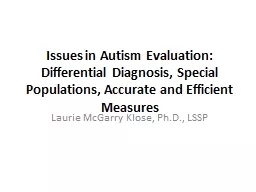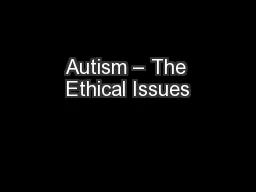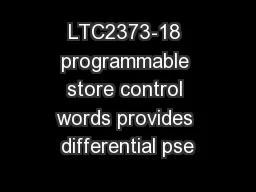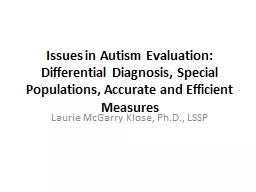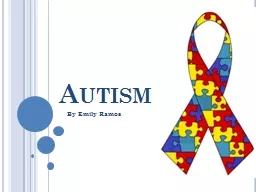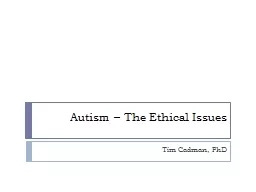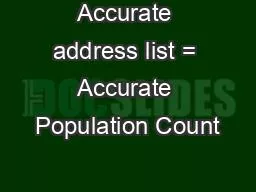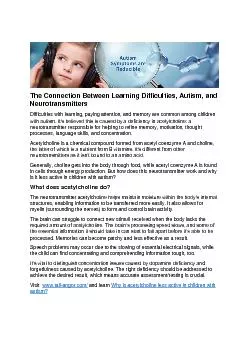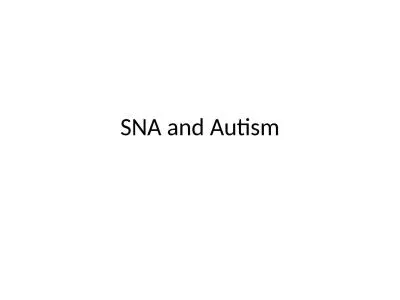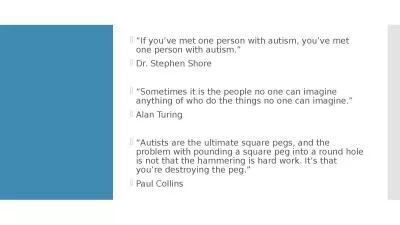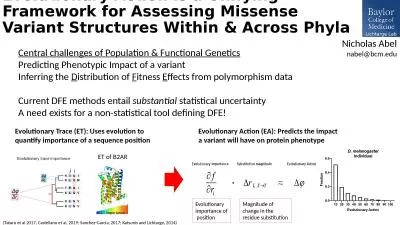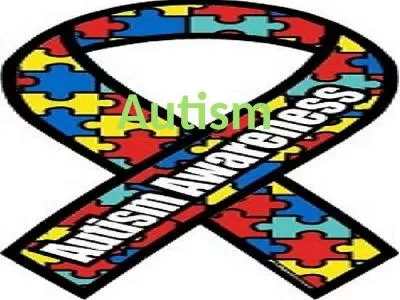PPT-Issues in Autism Evaluation: Differential Diagnosis, Special Populations, Accurate and
Author : celsa-spraggs | Published Date : 2019-02-27
Laurie McGarry Klose PhD LSSP Objectives Examine DSMV diagnostic criteria for Autism Spectrum Disorders Analyze utility of frequently used autism assessment measures
Presentation Embed Code
Download Presentation
Download Presentation The PPT/PDF document "Issues in Autism Evaluation: Differentia..." is the property of its rightful owner. Permission is granted to download and print the materials on this website for personal, non-commercial use only, and to display it on your personal computer provided you do not modify the materials and that you retain all copyright notices contained in the materials. By downloading content from our website, you accept the terms of this agreement.
Issues in Autism Evaluation: Differential Diagnosis, Special Populations, Accurate and: Transcript
Download Rules Of Document
"Issues in Autism Evaluation: Differential Diagnosis, Special Populations, Accurate and"The content belongs to its owner. You may download and print it for personal use, without modification, and keep all copyright notices. By downloading, you agree to these terms.
Related Documents

